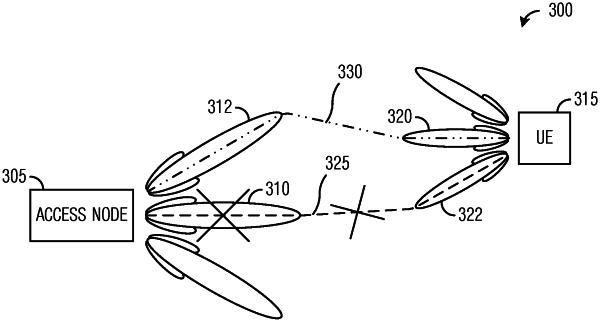| CPC H04W 72/046 (2013.01) [H04B 7/0695 (2013.01); H04B 7/088 (2013.01); H04L 5/00 (2013.01); H04W 72/12 (2013.01); H04W 72/23 (2023.01)] | 20 Claims |

|
1. A method for operating a user equipment (UE), the method comprising:
identifying, by the UE, a first beam during a beam failure recovery procedure, the first beam being identified as a candidate beam through which the UE can receive downlink transmissions;
sending, by the UE, a beam failure recovery request in response to identifying the first beam for beam failure recovery;
receiving, by the UE, a response to the beam failure recovery request based on an assumed quasi-co-located (QCL) relationship between a first reference signal and a second reference signal, wherein the first reference signal is corresponding to the identified first beam and the second reference signal is a demodulation reference signal (DMRS) associated with the received response;
during the beam failure recovery procedure, decoding, by the UE after receiving the response, a first channel and a second channel of a downlink transmission received through the first beam, wherein the beam failure recovery procedure is completed after the UE decodes the second channel of the received downlink transmission, wherein the second channel is a physical downlink control channel (PDCCH);
receiving, by the UE responsive to completion of the beam failure recovery procedure, an updated quasi-co-located relationship between the first channel and a second beam, from an access node; and
decoding, by the UE, the first channel of the received downlink transmission in accordance with the updated quasi-co-located relationship between the first channel and the second beam.
|